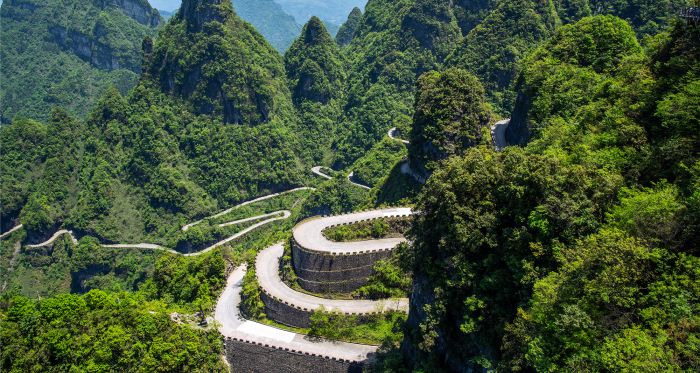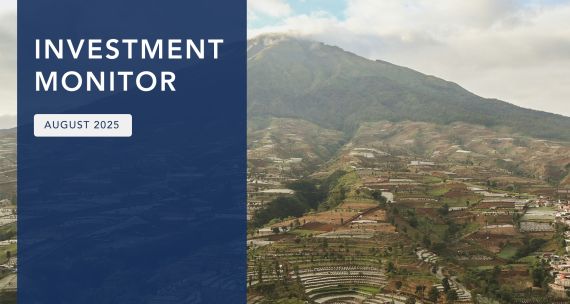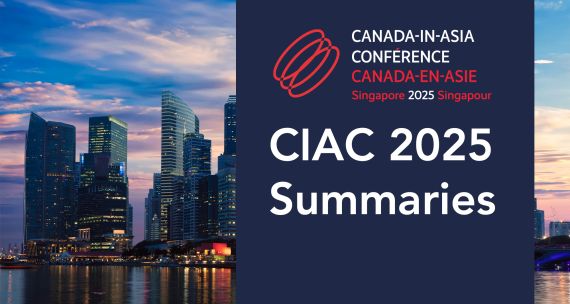In 2023, China’s ambitious but controversial Belt and Road Initiative (BRI) celebrated its 10-year anniversary. During its lifetime, this massive, Beijing-led global infrastructure and foreign policy program — which spans Eurasia, Africa, and even Latin America — underwent significant change. At its inception, one of the BRI’s stated aims was to address a serious gap in development financing for large infrastructure projects in low-income countries. A decade later, new BRI projects are instead smaller in scale and centred on more economically lucrative sectors (e.g. energy and technology) and geographic areas (e.g. middle-income economies).
As Beijing ushers in this new investment approach — known as the “small and beautiful” model — the BRI’s scale, funding scheme, leading actors, and geographical focus will change with it. What were the pressures that pushed Beijing to reimagine the BRI, and what is China hoping to accomplish under the “small and beautiful” model? As the BRI’s lifespan extends beyond the decade, its reformed mandate — and the various development initiatives Western governments have introduced in response — will likely have implications on the future of how countries work together in the pursuit of sustainable development.
China’s pivot from ‘project of the century’ to ‘small and beautiful’
As the centrepiece of Chinese President Xi Jinping’s foreign policy strategy, the BRI was designed primarily to increase China’s connectivity with international markets and cement Beijing’s influence and position as an economic and geopolitical power. Through the BRI, Chinese state-owned and private sector enterprises financed some US$1-trillion dollars’ worth of infrastructure projects across Africa, Asia, and South America. Eventually, China became the developing world’s largest creditor, raising concerns among Western governments over whether Beijing would leverage these debts for political gain. Allegations of ‘debt trap diplomacy’ emerged as early as 2017, once BRI debtors began defaulting on their loans. Questions regarding the BRI’s environmental impact and its potential undermining of democratic values (e.g. transparency and human rights) further tarnished the program’s standing on the international stage. Nonetheless, as of December 2023, around 151 countries still engage with the BRI.
While the BRI has faced significant international backlash throughout its lifetime, it was not until China began experiencing internal challenges that officials began re-evaluating the BRI’s investment strategy. Starting in 2018, tensions with the West resulted in a growing list of trade and investment restrictions against China, which crippled some of its fastest growing industries. Controversial economic policies adopted by the central government, including a highly publicized crackdown on several areas within the private sector, further strained investor confidence, and in 2020, Beijing’s ‘zero-COVID’ policy paused practically all economic activity in the country.
Now, for the first time since 1998 — when recording began — China is faced with a net outflow of foreign direct investment. Combined with a lacklustre post-pandemic economic recovery, a sustained real estate crisis, mounting local debt, and other recessionary pressures, China’s public sector is simply unable to handle the large infrastructure projects it once undertook under the BRI.
As such, since 2021, authorities have promoted the new “small and beautiful” model of BRI investment, ensuring new additions to the initiative are smaller, greener, and less financially risky than previous commitments. Projects should ideally fund themselves by virtue of being in more profitable and scalable sectors like technology, energy, and health care. To lead this transition, China’s central government, along with its state-owned enterprises, are increasingly encouraging the less cash-strapped private sector (e.g. CATL and Alibaba), as well as local governments (e.g. provincial governments and special administrative regions like Hong Kong), to play a larger financing role. Finally, while low-income regions continue to receive the most BRI funding, middle-income countries, such as Saudi Arabia and Indonesia, are quickly becoming some of the largest recipients of Chinese investment.
‘Small and beautiful’ in action
China’s increased engagement in the Arab Gulf states exemplifies the BRI’s “small and beautiful” transition and highlights what Beijing might hope to gain from working more closely with middle- and upper-middle income economies. Consisting of Bahrain, Kuwait, Oman, Qatar, Saudi Arabia, and the United Arab Emirates (UAE), these countries have substantial sovereign wealth funds and high demand for energy and technology, making it a lucrative market for Chinese firms.
As the world transitions from fossil fuels to low-carbon alternatives, oil-producing Gulf nations are looking to boost their economic resilience, diversify their markets, and strengthen their overall global competitiveness. To do this, their governments have highlighted two objectives: lead a digital transformation to help their economies diversify beyond fossil fuels and invest in renewable energy.
In recent years, Chinese firms have capitalized on the Gulf nations’ development objectives. With regards to digitalization, ‘national champion’ Huawei not only helped lay the foundation for Saudi Arabia’s 5G network, but also worked with local education partners to provide digital training and accreditation programming to Saudi citizens, demonstrating that Chinese firms not only offer knowledge in developing cutting-edge technologies, but also expertise on scaling and commercialization. In March 2023, Huawei and Saudi telecommunications operator Zain KSA agreed to jointly pioneer a next-gen “5.5G City,” further strengthening the bilateral partnership.
Similarly, Chinese solar giant GCL Technology has been eyeing Saudi Arabia as a potential home for its first overseas factory. Saudi Arabia hopes that its “huge demands for renewables” will attract Chinese partners, leading to a transfer of knowledge that will eventually allow the kingdom to replicate China’s cost-competitiveness and develop its own manufacturing base. According to the Saudi sovereign wealth fund, the country has ambitions to be one of the few places outside of China with a full solar value-chain.
For Chinese firms, the Gulf countries present opportunities to access new markets and attract non-Western investment. When a Saudi Arabian urban development project called NEOM sought to develop infrastructure for autonomous vehicles, it chose to work with Chinese startup Pony.ai. The two parties reached an agreement in October 2023, through which Pony.ai secured a US$100-million investment from NEOM’s financial arm. The deal includes the formation of a joint venture to develop, manufacture, and operate self-driving taxis across the Middle East.
Growing trade tensions with the U.S. and EU in the green energy sector have also pushed Chinese companies to seek new markets. In 2023, China dominated global solar-panel and electric vehicle production, and clean energy was the biggest driver of its economic growth. With a year-on-year expansion of 40 per cent, the industry helped keep the economy afloat as other sectors, like real estate, contracted. However, with so many producers competing for China’s limited demand, clean energy companies increasingly need to sell their products overseas, lest they oversaturate the domestic market.
Lastly, with the Gulf region being home to well-developed capital markets and some of the world’s largest sovereign wealth funds, Beijing likely hopes that reciprocal Arab investment into China will inject some much-needed foreign capital into its stagnating economy. Indeed, sovereign wealth funds in Saudi Arabia and the UAE reportedly invested US$2.3 billion into China in 2023, up from US$100 million in 2022.
The Western response to an expanding BRI
While much of China’s “small and beautiful” transition can be observed through its activities in the Persian Gulf, this new investment strategy is also seen across other middle-income regions and economies. For example, during Angolan President João Lourenço’s state visit to Beijing in March 2024, Xi vowed to help the oil-rich Angola “achieve agricultural modernization, industrialization, and economic diversification” by expanding the bilateral investment relationship beyond fossil fuels and into sectors like mining, agriculture, and manufacturing. Similarly, China’s investment partnership with Indonesia, one of the BRI’s largest recipients, now extends beyond infrastructure to include sectors such as finance, mining, clean energy, and digital technology.
As Beijing works to cultivate closer ties with the Global South through the BRI — raising concerns about an alternative China-led global world order — the West has identified the need to respond with its own global development initiatives. The most notable competitor to the BRI is the G7’s Partnership for Global Infrastructure and Investment (PGII), a US$600-million initiative launched in 2022 aimed at financing “high-quality infrastructure” in low- and middle-income countries. Some observers have called the PGII “the West’s answer” to the BRI, particularly with respect to its similar focus on clean energy, digital connectivity, and health. Like the BRI’s “small and beautiful” model, the PGII also aims to leverage private capital to fund its projects.
However, the long-term impact of the PGII remains unclear. Politico, for example, has noted that while China can rely on its state-owned enterprises to invest through the BRI, Western governments must instead rely on market incentives to encourage private businesses to engage in developing countries, which could prove difficult given that Western companies do not face the same economic and geopolitical challenges (e.g. sanctions and overcapacity) that prompted Chinese firms to seek new markets and investors.
Additionally, some G7 countries are proposing reductions to their diplomatic capacity. Global Affairs Canada, for example, announced major budget cuts for the next three fiscal years. More significantly from a global perspective, a potential second Trump administration could place the U.S. back on an isolationist path. Both developments would raise serious questions regarding whether ambitious foreign policy initiatives like the PGII would be able to stand the test of time.
Nonetheless, the emergence of new competitors to the BRI, which itself was set up to be a competitor to the IMF and the World Bank, is a positive sign for sustainable development. As China and the West contend over who can provide the most competitive investment package, developing countries are seeing more options to help address the serious need for more infrastructure investment, technology transfers, and climate finance.





